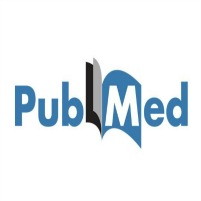
Cannabis as medicine: time for the phoenix to rise?

 Since 1971 British doctors have been barred from prescribing cannabis under the Misuse of Drugs Act. Many otherwise law abiding people have subsequently thought it worthwhile to expose themselves to the risk, inconvenience, and expense of obtaining illegally a drug they believe can ease symptoms inadequately controlled by conventional medicines. Patients have told me how effective cannabis can be in relieving aches and pains, numbing the symptoms of opiate withdrawal, improving sleep, reducing anxiety, and alleviating the vomiting, anorexia, and depression associated with AIDS related disorders. Anecdotes such as these are all very well, but is there any scientific evidence that cannabis has real therapeutic value?
Since 1971 British doctors have been barred from prescribing cannabis under the Misuse of Drugs Act. Many otherwise law abiding people have subsequently thought it worthwhile to expose themselves to the risk, inconvenience, and expense of obtaining illegally a drug they believe can ease symptoms inadequately controlled by conventional medicines. Patients have told me how effective cannabis can be in relieving aches and pains, numbing the symptoms of opiate withdrawal, improving sleep, reducing anxiety, and alleviating the vomiting, anorexia, and depression associated with AIDS related disorders. Anecdotes such as these are all very well, but is there any scientific evidence that cannabis has real therapeutic value?
The BMA has addressed this question with an excellent report, which begins by reviewing the pharmacology.1 Only a few of the 60 or so chemicals unique to Cannabis sativa(cannabinoids) have so far been studied, the best known of which is the main psychoactive ingredient, δ-9-tetrahydrocannabinol (THC). Specific cannabinoid receptors in the brain and in spleen macrophages, and naturally occurring substances which bind to these (anandamides), have been identified in recent years. These findings open the door to developing novel agents for therapeutic use or exploring the physiological role of the anandamide system—which may be concerned with mood, memory and cognition, perception, movement, coordination, sleep, thermoregulation, appetite, and immune response.2
The report evaluates the scientific literature on cannabis and cannabinoids in relation to the strengths and shortcomings of existing medicines and proposes directions for research. The strongest evidence relates to the effectiveness of δ-9-tetrahydrocannabinol and the synthetic cannabinoid nabilone in relieving nausea and vomiting secondary to cancer chemotherapy. Nabilone is licensed for this use in Britain, but δ-9-tetrahydrocannabinol (as dronabinol) is not. A pilot study suggests that the non-psychotropic δ-8-tetrahydrocannabinol has promise as an antiemetic in children.3 Proposals for research contained in this section are applicable to most of the others: exploration of optimal regimens and the relative usefulness of different cannabinoids; controlled comparisons with newer medicines alone and as adjunctive therapy; specification of patient categories; and a focus on other conditions producing similar symptoms.
Many anecdotal accounts indicate that cannabis and some cannabinoids can relieve symptoms related to muscle spasticity, but the few controlled studies offer only modest support for this. Good evidence exists from basic research that several cannabinoids have analgesic and anti-inflammatory properties, but eight small scale human studies listed here give equivocal results. Again animal studies suggest that cannabidiol has possibilities as an anticonvulsant, but the human data are lacking. δ-9-Tetrahydrocannabinol definitely reduces intraocular pressure and produces bronchodilatation but its potential in glaucoma and asthma is not compelling on current evidence.
Relief of symptoms in AIDS related disorders is one of the most interesting possibilities. The appetite stimulating effect of oral dronabinol in patients with AIDS4 was convincing enough to win approval from the American Food and Drug Administration for this indication. This attribute, combined with antiemetic and possible analgesic, anxiolytic,5 hypnotic,6 and antidepressant7 properties, suggests a profile uniquely relevant to this condition and a compelling reason for research.
Adverse effects relevant to clinical use are discussed. No deaths have been attributed to cannabis toxicity alone. Common acute effects include sedation; psychological symptoms (euphoria, anxiety, paranoia, impaired memory); and physical symptoms such as dry mouth, ataxia, blurred vision, weakness and incoordination, and tachycardia. Impaired psychomotor performance may persist as long as 24 hours after a single dose. Interactions with central nervous system depressants are possible, as is aggravation or precipitation of psychosis in vulnerable individuals. Physical and psychological dependence can occur, but withdrawal symptoms are usually mild. Inconsistent effects on sex hormones and immunosuppression in animals have been reported. Cannabis smoke is as rich in toxic gases and particulates as tobacco smoke, so regular heavy smokers probably face an increased risk of cardiovascular and respiratory diseases.
The report concludes that individual cannabinoids have a therapeutic potential in several conditions in which other treatments are not fully adequate and that they are safe drugs with a side effect profile better than that of many drugs used for the same indications. The BMA recommends that the government should amend the Misuse of Drugs Act to allow cannabinoids to be prescribed in a range of medical conditions, calls for the setting up of controlled clinical trials, and suggests that pharmaceutical companies should search for novel analogues to open up new therapeutic possibilities.
The BMA is not alone in arguing for enhanced access to cannabinoids in clinical practice. Others include the Royal Pharmaceutical Society,8 the previous president of the Royal College of Physicians (L Turnberg, personal communication), and many British doctors.9The role of cannabinoids in modern therapeutics remains uncertain, but the evidence in this report shows that it would be irrational not to explore it. The active components of a plant which has been prized as a medicine for thousands of years should not be discarded lightly, and certainly not through political expediency or as a casualty of the war on drugs.
References


